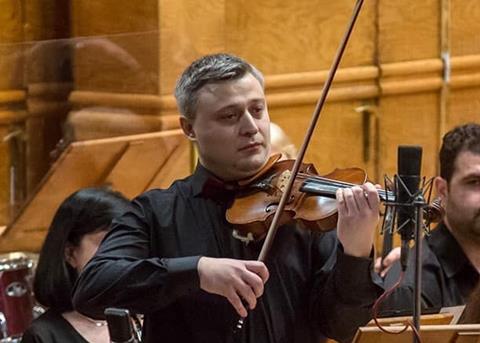In the second of a four-part series of blogs, violin professor at Junior Guildhall Ivo Stankov offers advice on how to practise efficiently

Point 1 - General knowledge and Skills
Approach the topic of practising holistically – connect body, mind, and soul in a way so that playing feels technically effortless. This principle will provide you with the correct mindset for approaching the technical and musical challenges ahead.
Develop listening skills and learn how to observe in detail – focusing with your full attention by listening and watching to your teacher’s demonstrations in the lessons (and to others performing), will greatly impact on the amount, quality, and speed of the progress you make.
Further info on: Violin Tips Practicing Guide - General Knowledge & Skills
Point 2 - Posture
As in the previous point, make the holistic approach your mission here – observe the basic posture rules in your playing and monitor the way your body feels, including breathing as well. The movements of your hands technically should blend organically with the musical demands – practise purposefully to facilitate this process, correcting along the way any issues of excess tension or stiffness in your body.
Further into on: Violin Tips Practicing Guide - Posture
Point 3 - Left Hand
Always prioritise initially the left hand before the bow. Remember this principle as a 3-words command: ‘fingers before bow’. Convert anything you play into patterns and the more you train that skill, the more the brain will start recognising and memorising those groups of patterns (and any exceptions too!) automatically. Don’t underestimate the importance of practicing exercises and studies – a 3-minute exercise by Sevcik practiced regularly for example, will help you to developing the fingers’ dexterity or articulation in learning patterns. Practise slowly intonation, shifting, and vibrato, and exercise them separately on scales.
Further info on: Violin Tips Practicing Guide - Left Hand
Point 4 - Right hand
Start focusing on your bow action as soon as possible. Practise the bow movement regularly over scales, and also listen to violinists whose tone you particularly admire. Learn about bow control in great detail technically. Develop your understanding musically about phrasing, style, and character, and always strive for producing a beautiful tone – make it your mission! Remember that your musicality is what sets you apart, and that your musical expression takes its main shape through the sound and the tone quality you produce with the bow.
Point 5 - Putting things together
Practicing is a lot about breaking down the structure of a piece to a single detail technically - think about improving on your intonation, rhythm, and sound as separate categories first before joining them back together. Working on intonation requires you to learn how to listen. Don’t take it for granted – constantly check and compare notes and intervals playing them slowly and quietly, making that process a habit. Practicing scales in double-stops especially, will further improve that habit. Build up your patience too - unless you are completely and fully focused and calm, listening and playing slowly can be a waste of time!
Playing rhythmically can be taken for granted sometimes, however rhythm and pulse should be addressed as equally important to intonation or sound. Develop an awareness of pulse using a metronome in practicing, and say or clap complicated rhythms to mentally visualise exactly where each beat ‘lives’ – I strongly recommend to even take a few drumming lessons too!
Further info on: Violin Tips Practicing Guide - Putting Things Together
Point 6 - Scales & Exercises
Make your daily scales routine short and specifically useful, and don’t just play them out of habit. Use scales for improving your technique, it should always be your ‘go to’ place when a technical problem persists. Adapt your scales to your needs – discuss and establish with your teacher what technical aspects need improvement (a particular bow stroke, tone quality, or vibrato, for example), and practice them on a scale. Take out a particular problem from the piece you are learning (spiccato for example), and practice it on a one-octave scale. Always play your scales purposefully - the greater the attention is to a detail, the more control you will gain over the instrument.
Scales books by Sevcik, Schradiek, Flesch, or Galamian, are systematically structured and an excellent choice for learning how to playing scales and exercises. Ideally go through all of them gradually. Don’t be put off by the sheer volume of the scales books - pick and choose some shorter sections to use in your daily routine either as a 10-minutes warm-up, or as a specific problem-solving exercise.
Further info on: Violin Tips Practicing Guide - Scales & Arpeggios
Video Tutorials on Scales and Exercises
Further blog posts from Ivo Stankov will include how to practise a piece and how to perform with confidence.
Read: The 3-points practicing routine: Description - Action - Result
Read: Opinion: Make ’em laugh
Topics
The 3-points practicing routine: Description - Action - Result
- 1
- 2
 Currently reading
Currently reading6 technical ways for improving your practice
- 3
- 4














































No comments yet